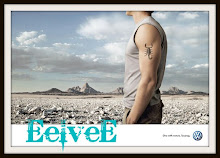
TANGO: POETRY IN MOTION
By Bob Fisher
Originally published in IFF magazine, April 1998
Poetry in motion is the best way to quickly describe Tango, a unique collaborative effort involving cinematographer Vittorio Storaro, AIC, ASC (Reds, Apocalypse Now, The Last Emperor, Dick Tracy) and director Carlos Saura (Peppermint Frappe, La Prima Angelica, Deprisa, Deprisa, Carmen). The film chronicles the migration of people from Italy and Spain to Argentina during the span of the 20th century and couples that phenomenon with the evolution of the tango.
Tango is a story within a story about a director (played by Miguel Angel Sola) who is producing a film about the history of the tango. That sets the stage for five elaborate dance numbers skillfully weaved into the fabric of the story. The film was produced in Buenos Aires, mainly on one large sound with about 10 percent of the original photography done at practical locations around the city to establish the setting.
Storaro and Saura had a sparse two weeks together in Buenos Aires scouting locations and building a historically accurate foundation for the script authored by the director. Storaro developed a visual strategy, which uses motion, colors, light and shadows to evoke emotional responses. He pioneered the use of a new type of translight developed by Rosco Laboratories as the background for transitions from darkness to dawn as well as the passage of time over the 20th century.
The mural contained a montage of 15 still images depicting the arrival of the immigrants. The cinematographer's son, Fabrizio Storaro (video assist operator) designed the montage using a personal computer and digitized images.
Rosco manufactured the 90-by-30-foot photomural. The illusion of night and day was achieved by front-and backlighting the translight.
"We used a progression of colors to express specific meanings during the filming of the five dance numbers -- violet, indigo, blue, green, and then yellow, orange and red," Storaro explains. "Each color emits a specific wavelength of energy which the audience is capable of perceiving the same way they feel vibrations. Color isn't just something you see. It is also something you feel."
The cinematographer routinely used two camera crews, one from Spain and another from Italy, to give the editor (Julia Juaniz) sufficient coverage from different angles. This also reduced the number of takes which was particularly important because the dance numbers were exhausting. Saura and Storaro wanted to capture the dancers on film at their vibrant best while their energy was at a high level.
The cameras were always moving, one on a dolly and the other on a crane. Storaro used interactive lighting with the aid of a computerized dimmer control board. The angles, intensity, color and direction of light is always flawlessly choreographed with the movements of the dancers, actors and cameras.
Tango was recorded on Eastman EXR 5293 film, chosen by Storaro, because it rendered seamless images that captured the vibrancy of colors and the richness of tonality or contrast without introducing grain which would have distracted the audience.
Tango was the third time in three years that Saura and Storaro have worked together. Their other films were Flamenco, a stunningly beautiful performance film (for which Storaro received a Goya nomination for cinematography), and Taxi, a chillingly dark drama set in contemporary Spain.

No comments:
Post a Comment